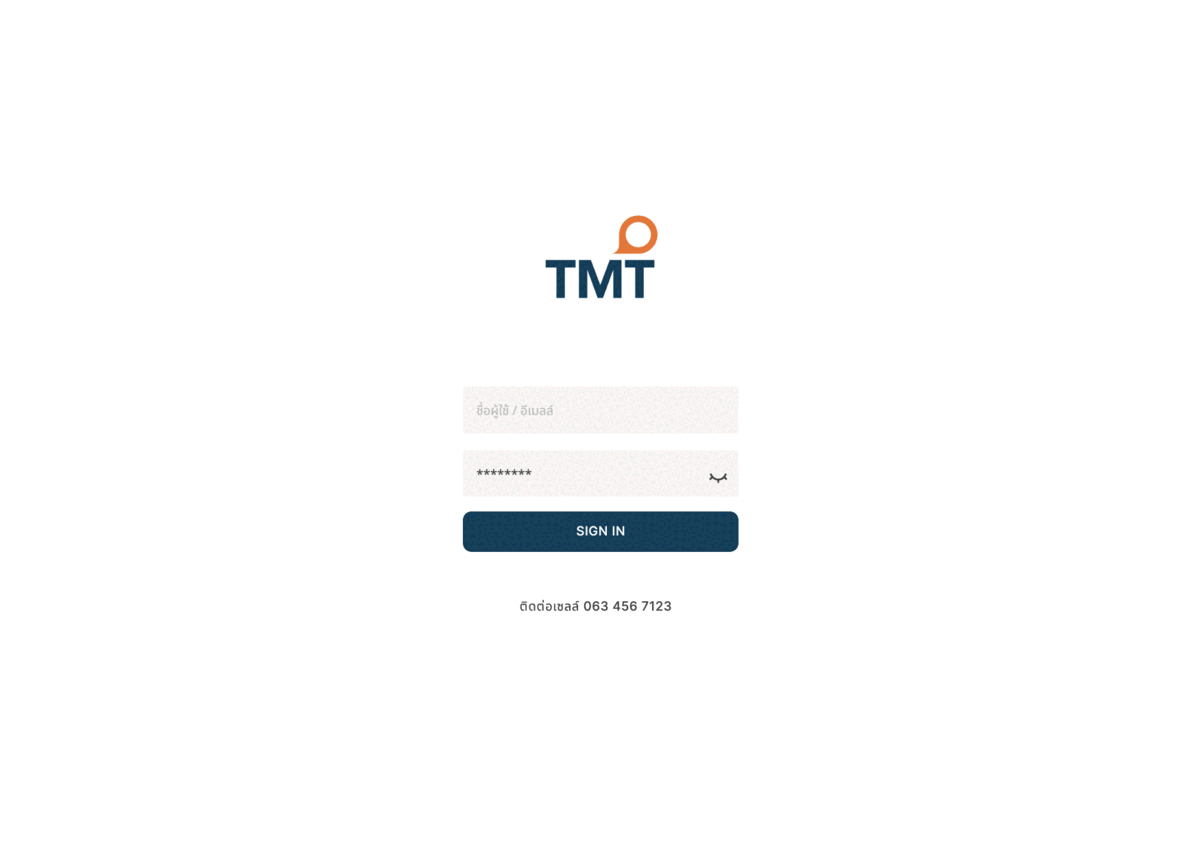![]()
UX/UI - TMT
Early-Stage Product Development | TMT Digital Retailing App
January 2021 – April 2022
This project was part of my early contributions during the formative stage of a startup under Fireoneone Company Limited. As the sole designer in a cross-functional team, I collaborated closely with a product manager, venture builder, business developer, and data analyst to shape the product from the ground up. I was responsible for leading the end-to-end design process—from user research and analysis to UX/UI design and usability testing.
Role & Responsibilities:
-
Led user research and analysis to uncover behavioral insights and key user needs
-
Developed and planned research frameworks to guide product direction
-
Designed UX/UI flows and interactive prototypes that aligned with business and user goals
-
Conducted and led usability testing to validate and refine the product experience




B2B Steel Retailing Application
Thailand has no major iron mine and primary steel production mill. So, most of the players are dealers who make competitive advantages by creating margin using access to upstream market information. However, the rapidly advancing digital technologies are gradually pushing commodity markets increasingly toward greater liquidity, price transparency, and ability to hedge risk, putting more pressure on traditional businesses which their model based on earning margins through speculation. We see the opportunity as the construction material is a huge market with ฿1.3 trillion worth of industry. However, the infrastructure that supports this market has barely changed and is mostly undigitized, especially 13,000 traditional dealers of construction material businesses. The project aims to sync the real-time and transparency information across the supply chain and change the way steel supplier(our client) makes profits from a margin-arbitrage business to a real service business. In the meantime, this new tool will help the traditional dealers(end users) to compete with modern traders, strengthen their business and prevent them from both business and digital disruption. Through in-depth interviews, we found that these dealers have been suffering from the delay of price and availability information from suppliers to fulfill their customer inquiries. This lack of information results in less satisfaction, the inefficiency of the internal work process, and an average 20% opportunity loss.
New User Journey Design
In this first version of the product, we propose a new procurement process with simple web-based application. The real-time data of stock and price help bridge the dealers’ inventory to their supplier directly and help reduce their necessary of holding in-house stock. Also, the automation is designed to minimize repetitive task of information inquiry and improve working efficiency. With this new tool, sales person would be able to focus more on creative and humanistic task. Alongside with the our client’s Enterprise Resource Planning (ERP) system development, this early version needs to combine both online and offline service to complete the procurement process. Its user experience and interface is also tailor-made for dealers’ business through the iterative process of user researches and tests. The product has launched and continues collecting user data to develop and scale in the future.
Features
The application features were derived from problem mapping interview with 11 dealer compaines, across different characteristic and demography. The in-dept interview data was processed through co-create workshop with exacutives and sales team which result in 25 core features. Our team score each one impact together with readiness of our client company, both people and infrastructure, to prioritize and illustrate the product roadmap.
Working with users
Unlike B2C platform, B2B platform testing is more sensitive. Not only the users are long-term partner to our clients, yet the value per transaction is very high. We have to select the right pioneer to use the new developed platform, give feedback, and usability data. The key criterias are negotiation behavior, Delivery pattern, credit term limit, type of products ordered, frequenzy of inquiry, Digital literacy, and readiness of sales person.
User Interface Design
The more data we want to collect means the more interactions(aka effort) are required before users can get what their want(in this case: product price and availability status). The design is based on the balance and trade-off between these two dichotomies. For example, B2B customers often order many items per order. So, the UI display items are categorized in dropdown groups, and allow users to browse items without switching through pages. We also use the average SKU per order number to determine the number of items that they would see in the cart without scrolling to minimize actions they have to take and save them for the more crucial purposes. Moreover, I am also responsible for reorganize master data of more than 3,500 SKU products and change its supplier’s logic structure to a buyer friendly version.
The design undergoes the process of modification, subject to data we newly collect from each MVP test sprint. Not only numeric data like session length, drop off rate, or frequenzy of actions, we also integrate it with qualitative data from in-depth interviews to add meaning to the numbers.
